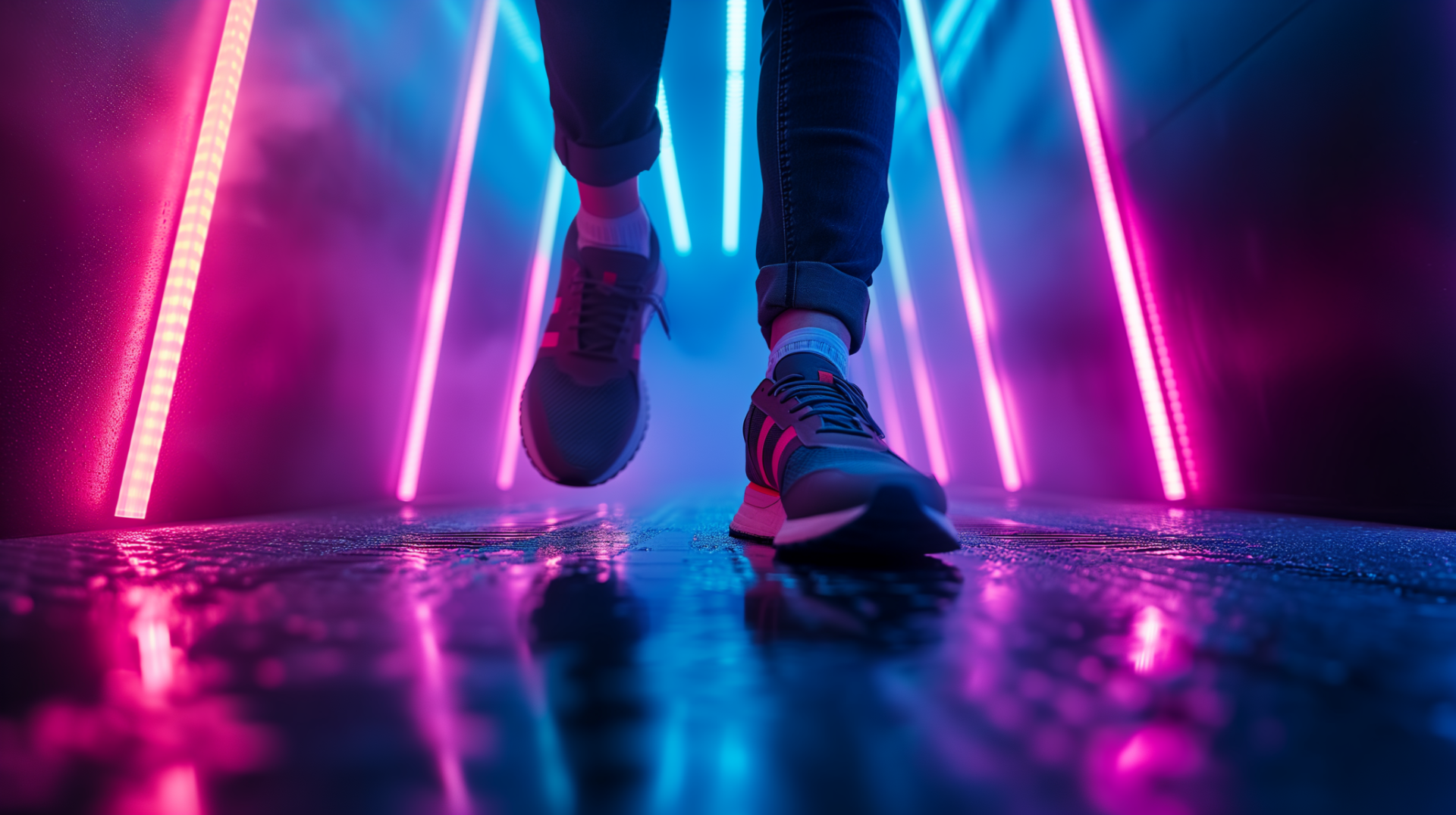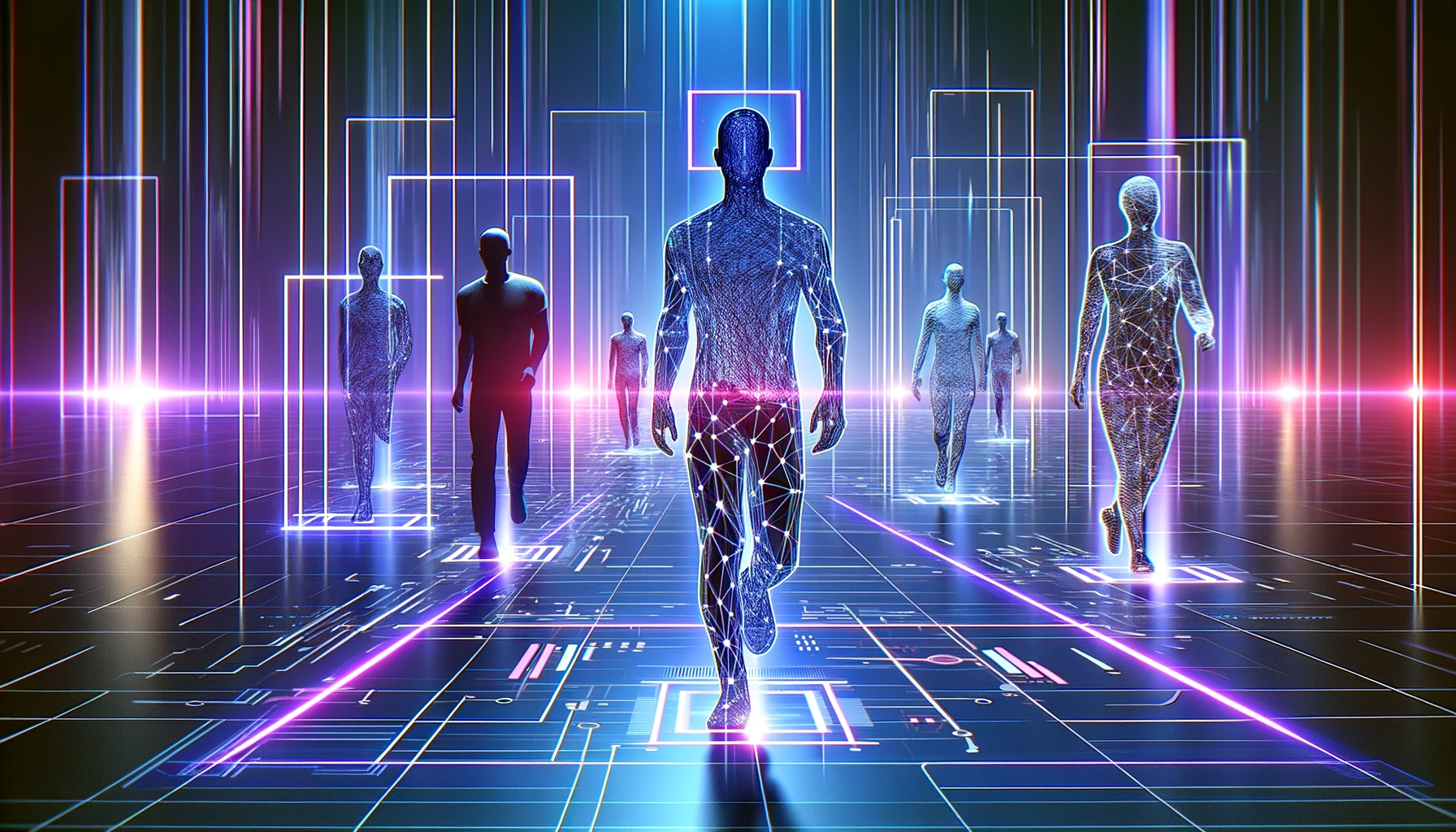Gait Recognition: The Unique Biometric Trait for User Verification

Introduction
Biometrics is an increasingly popular form of biometric authentication. Instead of using something that a user knows or has to identify them, biometrics uses something unique to them as a person.
Many forms of biometric authentication use unique physical features for authentication, such as fingerprints, voices, or iris patterns. Gait recognition is different in that it uses something unique about how a person acts or moves, in this case, their walking gait.
Everyone has a different gait, which is based on a range of factors. This makes it a new, cutting-edge option for identifying and authenticating users. This article explores gait recognition in more detail, including how it works and its benefits and use cases in various industries.
What is Gait Recognition?
Gait recognition identifies people based on their walking style. This style is determined by numerous different factors, including body composition, past injuries, and how a person was taught to walk.
This combination creates a walking style that is distinct enough to be used as a unique feature for authentication. In the past, this technology used a range of sensors connected to a user’s body to measure gait, but modern systems can use cameras and identify people based on video of them walking.
Biometrics has been an area of active research and interest due to its potential to replace less secure authentication systems such as passwords or one-time passwords (OTPs) delivered via SMS or email. Gait recognition offers strong authentication either independently or as a complement to other biometric authentication systems such as facial, voice, or fingerprint recognition.
How Gait Recognition Works
A gait recognition system works similarly to other biometric authentication systems. It begins with a data collection step where the system builds a model for the user in question.
In this case, building a model include observing video of the user walking and extracting certain features from this video. These features will then be fed into a machine learning algorithm that builds an internal model capable of recognizing the user’s unique walking patterns.
After the machine learning system has built an internal model, it can be used for user identification and verification. When presented with another video of the user walking, the system will be able to identify and authenticate the user.
Gait recognition differs from other biometric authentication systems because it uses behavioral biometrics and is non-intrusive. Since users don’t need to do anything but walk to authenticate themselves, this technology can be used for continuous user verification as a person moves around within an area monitored by cameras.
Advantages of Gait Recognition

Gait recognition is a promising authentication mechanism that can enhance the security of user accounts and secure areas within an organization. Some of the main benefits that this system provides include the following:
- Unique:> Everyone has a unique gait or walking pattern. This makes it an ideal candidate for user identification or authentication, which requires a unique feature or secret for security.
- Non-Intrusive: A user can be identified or authenticated based on gait by analyzing a video of a person walking. This makes the technology non-intrusive and eliminates the need for physical contact or active user participation.
- Difficult to Forge: These systems make determinations based on various factors, many of which are dependent on the subject’s body. This makes a user’s gait difficult to spoof or forge and more secure than other authentication systems.
- Continuous Verification: The technology doesn’t require physical contact or any participation by the user. This enables continuous verification by monitoring video of the user as they go about their duties.
- Behavioral Biometric: Many biometric authentication systems — such as fingerprint and facial recognition — measure the physical characteristics of the user. Gait recognition measures unique behavior, making it a good complement to other biometric systems.
Gait Recognition Use Cases
Gait recognition is a viable mechanism for any environment where the user is physically present or can be monitored via video. For example, it can be used to uniquely identify an individual based on how they walk. This makes it useful for identifying and monitoring people in various environments, including public or crowded spaces. It can also be used to authenticate users’ identities before permitting them access to secure or restricted areas.
The technology also has applications specific to various industries. Some fields where it can be of value include the healthcare, financial, and insurance sectors.
Healthcare
Gait recognition has various applications in healthcare, including the following:
- Patient Identification: It can be used to perform enhanced identification of patients within healthcare facilities. This helps to ensure that treatment and records are linked to the correct patient.
- Fall Detection and Rehabilitation: These systems are designed to identify patterns in how people walk, including abnormal ones. This can help to identify patients who require physical therapy or other rehabilitation support to address mobility issues.
- Remote Monitoring: Gait recognition systems can be used to perform ongoing patient monitoring. This can be used to both identify and track patients and to determine a patient’s recovery progress.
Finances and Banking
Strong user authentication and identification are vital in the financial sector. Gait recognition has several potential applications, including:
- Secure Transaction Authorization: Financial institutions are often monitored by closed-circuit television, which can support gait recognition systems. These systems can be used to provide additional authentication of a user’s identity before permitting them to perform financial transactions.
- Fraud Detection: Gait analysis can be used to detect unusual walking behavior, including patterns associated with stress or fear. This makes it valuable for identifying suspicious behavior and potentially fraudulent transactions within a financial institution.
- Biometric ATMs: ATMs use various user authentication systems, but card skimming and PIN theft are common threats. Gait-based authentication systems can be used to perform seamless, secure user authentication while protecting against fraudulent transactions.
Insurance
Insurance providers require the ability to identify policyholders and assess claims. Some applications of gait recognition for insurance include:
- Claimant Verification: This technology can be used as a verification method for claimants of insurance payouts. This helps to further reduce the potential for fraudulent claims.
- Accident Reconstruction: The ability to identify movement patterns can aid in reconstructing accidents. This can help insurance adjustors to determine the movements of parties involved in an accident and accurately settle potential claims.
- Health and Life Insurance Underwriting: The ability to recognize anomalous movement patterns can also be used to identify health risks for individuals. This information may be included as a factor when determining insurance premiums for health and life insurance policies.
Limitations and Challenges of Gait Recognition
Gait recognition is a promising method of user identification and authorization. However, it does have its downsides, including:
- Environmental Factors: These systems typically are designed to identify an individual’s normal walking patterns. These patterns may be impacted by different walking surfaces, such as uneven terrain or a slippery floor.
- System Complexity: Modern gait analysis systems use artificial intelligence and machine learning to learn and recognize users’ gaits. This can result in a complex system of cameras and computers to implement the technology at scale.
- User Cooperation: Gait recognition systems identify and authenticate users based on their normal walking patterns. A non-compliant user could attempt to fool the system by using a different walking pattern to prevent identification.
Implementing Gait Recognition

Implementing a gait recognition system is a multi-stage process that includes the following considerations:
- System Setup: These systems need a collection of sensors and computers to operate. During the setup phase, the organization will deploy the necessary cameras and connect them to gait recognition algorithms.
- Data Privacy and Security: The systems use behavioral biometric data, which is sensitive information. The organization will need to develop processes and security controls to collect, store, and secure this data in accordance with applicable regulations.
- Continuous Monitoring and Updates: When a user registers, the system will build a profile for them based on observation of their walking patterns. This profile may need to be updated periodically to reflect changes in their gait, such as those caused by an injury.
- User Education: Gait analysis systems require some level of user cooperation to function properly. Users will need to be educated about the system, its benefits, and how to use it correctly.
- Integration with Existing Systems: Gait recognition can be used for user identification and authentication. If an organization chooses to do so, the system must be integrated with its existing surveillance and identity and access management (IAM) solutions.
Future Trends in Gait Recognition
Gait recognition is an evolving technology and one of the first options for mainstream biometric authentication based on behavioral rather than physical biometrics. As the technology improves and gains more mainstream adoption, its potential use cases across various industries will increase.
Gait analysis systems have already made great strides from their beginnings, but further improvements are always possible. Improvements in sensor technology and the machine learning algorithms used to recognize users’ behavior patterns will enhance the performance of the system and may enable it to overcome challenges such as identifying users walking over different types of surfaces.
Conclusion
Gait recognition is a promising, unique option for biometric user identification and verification. Instead of relying on physical characteristics, gait analysis is a non-intrusive, behavioral biometric option that enables continuous user identification and authentication. It always provides secure authentication but may struggle to identify or authenticate users under certain conditions, including different environments or non-compliant users.
Kelvin Zero offers secure multi-factor biometric authentication for an organization’s employees and customers. Enhance your organization’s security and the user authentication experience with a universal biometric pass.
Howard Poston
Howard Poston is a copywriter, author, and course developer with experience in cybersecurity and blockchain security, cryptography, and malware analysis. He has an MS in Cyber Operations, a decade of experience in cybersecurity, and over five years of experience as a freelance consultant.